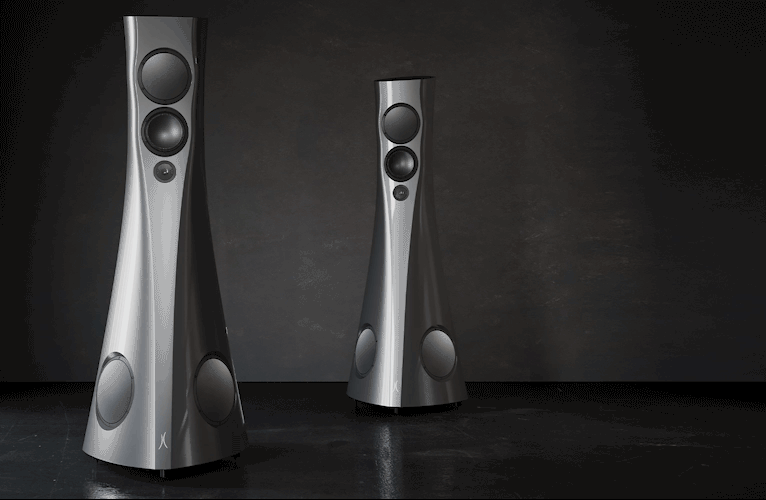According to the late, great Harvey Rosenberg, Buddha is said to have said: “I would rather have a cup of tone, than an ocean of power”. Well, in the VTL MB-185 Series III Signature monoblock power amplifier, we may have just found both. VTL, short for Vacuum Tube Logic, have been in the business of making high quality tube-based amplification (and only tube-based amplification) since 1987. The VTL MB-185 Series III Signature monoblock power amplifier is the latest and best iteration of an increasingly refined lineage that can be traced back to the classic VTL Deluxe 225, a power amplifier that, like the subject VTL, achieved its legendary status by applying the company’s cutting edge technology to the uniquely musical qualities of the EL34 valve power tube.
Metal Machine
As with many VTL amplifiers, the MB-185 Series III Signature monoblock amp can be switched, even on the fly, between triode and tetrode operation. In triode mode, the amps output 140 watts per channel into 5 ohms, in tetrode, 225 watts. Each Series III Signature monoblock uses eight EL34 output tubes per channel with one 12AT7 double triode and one 12BH7 double triode for the input and driver stages. The canny design choice to revert back to the EL34 (the earlier Series II used the more ubiquitous 6550) is not the only significant revision to a completely redesigned circuit.
VTL has a long history of designs with EL34 tubes. The first higher powered designs made in the UK factory under the VTL brand were all EL34-based, using the original Mullard EL34. Long admired for their rich, natural and open sound, the EL-34s bring a distinctive sonic signature that emphasizes the integration and inner detail of music, with a sweet midrange and fast, taut bass. Luke Manley, proprietor of VTL explained further:
When VTL started in the US in 1986 the EL34 was still the high power tube of choice, with the highest powered amplifier being the de Luxe 225, with 8 EL34s, operating in Ultra Linear mode. EL34 tubes are still utilized in our range today, in the ST-85 stereo amplifier, IT-85 integrated amplifier and MB-125 in our Performance Series. When we started using 6550s for our higher powered designs the 225 continued on in the range, designed with a lower profile output transformer than used in the 6550 models, to take advantage of the EL34s inherentl mid-range bloom and bass speed.
The 300-Watt MB-185 Series III Signature monoblock is somewhat of a throwback to the long-running de Luxe 225, now updated with triode/tetrode operation, a fully balanced differential circuit, with a shorter, faster and fully balanced negative feedback loop, and zero global negative feedback, for musical transparency and emotional engagement. The balanced negative feedback loop completely eliminates ringing and requires no capacitor compensation to maintain critical phase integrity and information, and the result is an amplifier that remains stable even under the most demanding loads.
The user-adjustable Damping Factor Feedback control allows the user to adjust the amplifier’s output impedance by varying the amount of negative feedback. Impedance can be set to suit the listener’s taste, improving control of the loudspeaker load to deliver best performance. This technique is preferred to the use of output transformer taps, as it is preferable to utilize the whole output transformer, for lowest leakage inductance and best power transfer.
The MB-185 Series III features automatic tube biasing and comprehensive fault sensing, with 3 redundant layers of protection against output tube failure. There is also a screen regulator to ensure that the screen grids of the output tubes are not over-voltaged. The completely redesigned multi-sectioned and interleaved output transformer is carefully matched to complement the midrange purity and quick, taut bass of EL34s, delivering a wide-band frequency response out to 1dB down at 100kHz and excellent square wave response. Along with a large main power supply there is also a second separate power supply for the input stage, to hold image stability while the output stage is delivering current.
The new Series III Signature, like its brother amplifiers in the VTL line, now employ a fully balanced differential input stage driving a differential phase splitter and a lower impedance push-pull output stage. Even single ended inputs are now converted to balanced operation. In addition, the amp uses a shorter, faster, also fully balanced negative feedback loop with zero global negative feedback. According, to VTL, “the revised negative feedback loop completely eliminates ringing and requires no capacitor compensation to maintain critical phase integrity and information”. The result is a faster, cleaner, more musically coherent amplifier that remains stable under most any load with a lower noise floor and improved dynamic range from the basement to the treble.
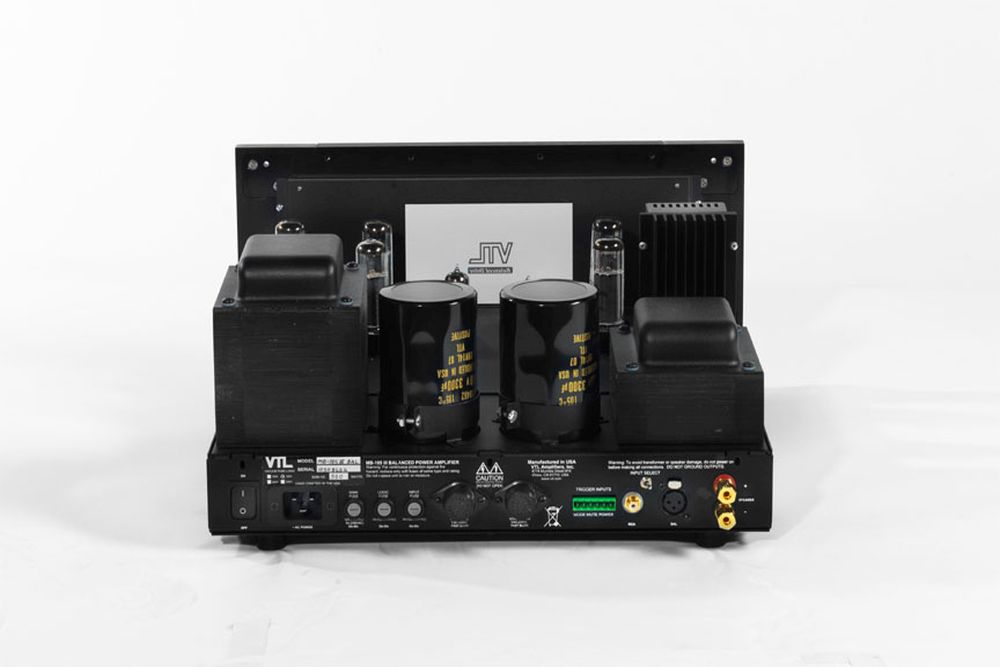
Crucial in any amplifier and arguably critical in a transformer coupled tube amp is the transformer design itself and (in) here are overkill-sized and built, even further refined proprietary VTL designed trannies whilst the amp has also been substantially re-voiced with an array of premium Mundorf silver foil capacitors making the most of the tonally sweet, extended and organic sounding EL34s in turn making for one harmonically creamy but compellingly and satisfyingly neutral listen.
A neat and, in use, highly practical feature is the inclusion internally of a variable Damping Factor feedback control switching system that allows the user to precisely adjust the amplifier’s output impedance by setting the amount of negative feedback to one of four possible levels so that impedance at the critical amp-speaker interface can now be varied to suit the listener’s taste and/or to improve control of the load on the loudspeaker to deliver best performance. As expected, the lowest setting uses the least negative feedback and provides the most natural sound but the least loudspeaker control. On paper, for instance, the Wilson Audio Sasha 2 appears to be a relatively benign load [it’s fairly high efficiency is however tied in with a low impedance minima – Ed], however, in reality, it needs a bit of pump so I got the best results using the Medium setting.
Any VTL amplifier is designed quite overtly – and self-consciously – to be as user friendly and to operate as reliably as any apparently ‘set and forget’ solid state amp. The VTL MB-185 Series III Signature amp is auto biasing so no need to up-end a 35.8 kg chassis to manually re-bias tubes as I have had to experience with other brands in the past and, moreover, in operation, adjustable bias and screen supplies keep the operating point of the output tubes constant even under typical AC and mains power supply fluctuations and stabilize the power supplies no doubt contributing sonically to that greater tonal stability that is a hallmark of this amplifier. As someone who has also had to experience on many occasions the uncertainty on start-up of a tube guitar amp in a live situation, the VTL is not only reassuring on start-up, going through a microprocessor controlled (each) tube monitoring and bias setting procedure but, additionally, has an auto fault sensing feature giving advance warning by way of individual LEDs of any prospective tube failure. Thank you, genuinely, VTL.
VTL’s specifications include an input impedance of 45 kohms, an load range of 4 to 8 ohms and a Signal-to-Noise Ratio (SNR) of -90dB at 120Hz.
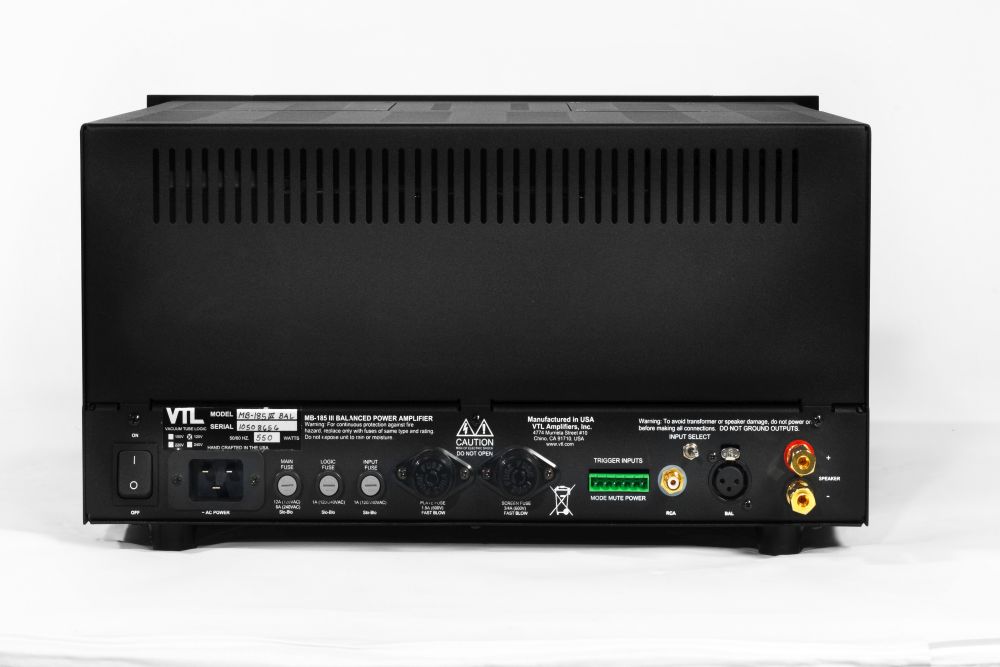
Finally, these are massive amps but the fit and finish is exemplary and the industrial design is, like everything else about these amps, intelligently thought-out and tidily easy on the eye. No ugly tube protection cages required here precluding pride of place in our living room.
In very extended listening, the VTL amps continually defied my expectations and indeed, many of my long held prejudices against more powerful push-pull tube amplifier designs. Instruments had righteous tone and harmonic accuracy, voices had airy projection and body (and height and chest), imaging was stable but never etched, and soundstaging was as wide and deep and natural as the recording permitted.
Where things got seriously ‘level next’ was in the area of pace, rhythm and timing. Here finally was an amp that delivered all kinds of music not only with buckets of refined, realistic tonal colour/s but, again, with the right recording (let’s face it some music is, and some musicians are, just downright ponderous and plodding), with state-of-the-art timing acuity and dynamic energy. It’s a rhythmic continuousness and linearity, if you will, and not merely killer harmonic linearity and integrity, but it’s one that I’ve only previously heard in much smaller 2A3 based SET amplifiers or amplifiers using the 45 valve.
Music
Onto the player goes XTC’s psych-pop masterpiece Skylarking. Here, the recorded space is obviously artificially constructed but is expansive and enveloping, my speakers simply disappear, whilst sonic images stay resolutely in place with a reach-out-and-touch Andy Partridge palpability oftentimes well beyond the confines of the speakers. But, equally importantly, as each track of the song cycle segues into the next, the various and varying dynamic gradations and tonal textures in each song are underscored and understood by way of a masterful sense of agility and temporal swing, by timing cues and information located up and down the sonic spectrum and forward, back, and across, making the listen at once so familiar and yet so musically fresh, vivid, and involving because it is so harmonically true and rhythmically compelling. The VTLs recreate the delicate aural ecosystem of the album with striking authenticity and immersion.
The Band’s dynamic ensemble playing in which each musician has such distinctive tone and slippery sense of timing has tripped up many previous an amplifier. On “Chest Fever” from Big Pink, the vocals are spooky real as the VTLs (referred thus from now on as the stereo pair) slink through the track with graceful ease and finely resolved articulation of The Band’s characteristic fluid sense of timing and rhythmic interplay. Rick Danko’s bass, indeed any bass range instrument through the VTLs, electric or acoustic, is taut (not just for a tube amp) and has remarkable grip, presence, inner detail and pitch definition, but the amps mids and treble are every bit as linear, fast, extended, and detailed (rarer for a tube amp). This is timing and tone in three dimensions and this is very, very cool indeed.
The VTLs are very quick but elegant and supple for somewhat powerful tube amps. They don’t time like a breathless ‘land speed record’ of an amplifier (apologies to Husker Du) where everything sounds clipped and metronomic and, usually, harmonically threadbare. Leading edge definition is excellent but not at the expense of harmonic development, long decaying reverberant trails, or micro and macro dynamic range and structure. And, as such, they are not limited by their well-executed design to merely playing typically reductive and simplistic audiophile show tunes to make them impress. Hear, for example, their insightful rendering of complex harmonic and rhythmic counterpoint in Point of Departure by Andrew Hill (or for that matter in the aforementioned hardcore album by Husker Du). I guess you need a bit of power to get those tones. Each instrumental line is striving for new vocabulary and is transparently rendered and clearly understood.
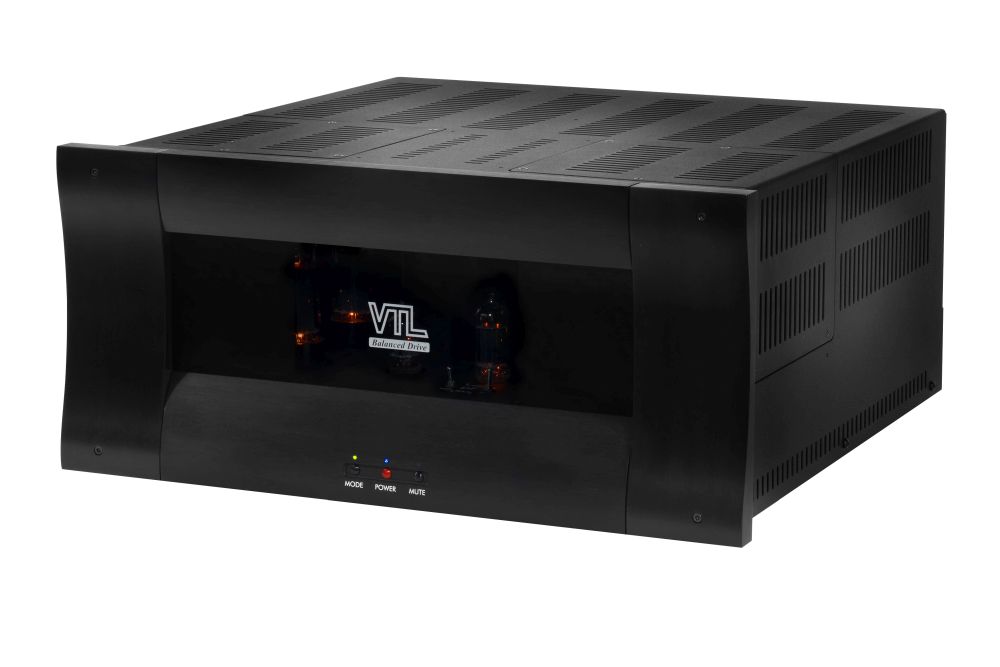
VTL has long held the view that you need tubes to achieve linearity and neutrality throughout the audio band because the vacuum tube is just simply a more linear amplifying device. Into the player goes contemporary Australian duo, Xylouris White, who have recently released their wonderful second album, Bleak Peak, and who have been described as combining “free- jazz, avant rock and ages old Greek-folk traditions” (The Herald Scotland, 25 November 2014) and in which they themselves attest “our music has a goat-ish rhythm”. For me, it’s like going to hear The Dirty Three in a Greek Church.
Curiously, and again contrary to expectation, even on smaller but no less nuanced musical programme, I felt tetrode mode sounds better. Better, clearer, top to bottom balance. More dynamic and extended frequency extremes. More ease, musical flow and intelligibility. More thermionic ‘whole-osity’ (thank you again, Harvey). More direct emotional connection to the music. George Xylouris’ principal instrument is the Cretan lute, which projects out of the speakers with harmonic complexity and air. The sense of live musicians in their room and now in yours is again spookily real. Tellingly, however, detail is not preternaturally thrust at the listener from outside of the naturally occurring performance. Rather, as in being at a live performance, detail is imminent as a naturally occurring aspect of the artists at work in a specific acoustic space and time. It is the actual physical presence of the amps themselves that can never be discerned. The VTLs instead ultimately give primacy to and serve wholly the performer and the performance. It is as if the glass fascia on the front of the amplifier’s casing is a window into that musical event, the tubes illuminating that performance, with seemingly infinite colours and washes of tone.
Trade offs? No audio component is perfect and you may get more obvious inner detail and resolution, especially spatial resolution at the remotest margins of the recording space, if it ever existed, elsewhere. You can obviously get even more power for less coin but you may not necessarily get this balance of musical virtues and, particularly, the VTLs’ singular way with timing. You can no doubt get even more transparency and extension somewhere.
Conclusion
For this here listener, the VTL MB Series III Signature Monoblock power amplifiers have a balance of strengths and so very few weaknesses that accords surprisingly well with my own set of musical values. They have the versatility to work well with a wide range of real world speakers with real world loads that can be even further tailored to suit by these amplifiers Damping Control, and they boogie like demons but with righteous and linear tone to boot.
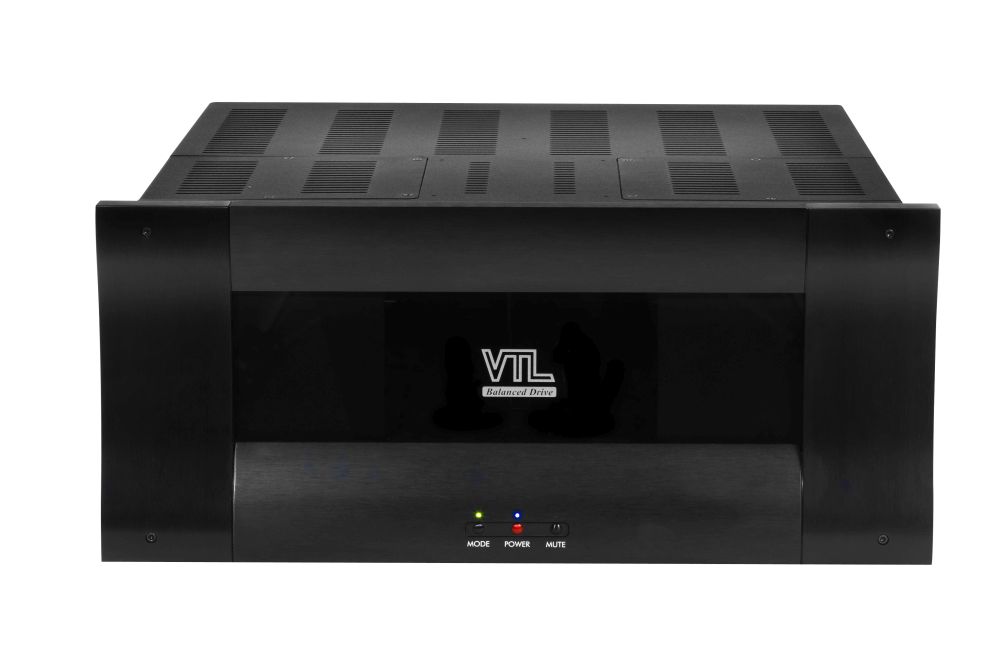
The VTL MB-185 Series III Signature amps, especially when mated with the highly sympatico VTL 6.5 Series II Signature tube based preamplifier, equally distinguished by its accurate tonal balance and rhythmic prowess and linearity, results in a system of amplification that has managed to bring out the best in every speaker I have to date hooked them up to, from big Wilson Sasha 2s to little Harbeth monitors. No glare, no listener fatigue. Just a whole lotta musical satisfaction going on.
They are essentially neutral and musical in their presentation no matter what the genre. They have performed flawlessly and reliably since they landed on my doorstep some months ago and they continue to surprise and captivate through each and every listening session. And, yes, I am working out how to afford the review samples.
. . . Peter Katsoolis
Associated Equipment
- Loudspeakers – Wilson Audio Sasha 2
- Amplifier – Wavelength Audio Napoleon
- Preamplifier – VTL 6.5 Series II Signature
- Sources – Oracle Delphi TT Lyra Titan I, Metrum Acoustics Hex DAC, Aqua La Diva Transport and Formula DAC (hopefully very soon-to-come)
VTL MB-185 Series III Monoblock Amplifiers
Price: AU$35,995 per pair
Warranty: Six months on valves, two years on amplifiers (five years after registration at www.advanceaudio.com.au in Australia)
Australian Distributor: Advance Audio
+61 2 9561 0799
www.advanceaudio.com.au
VTL Amplifiers Inc
909 627 5944
www.vtl.com








